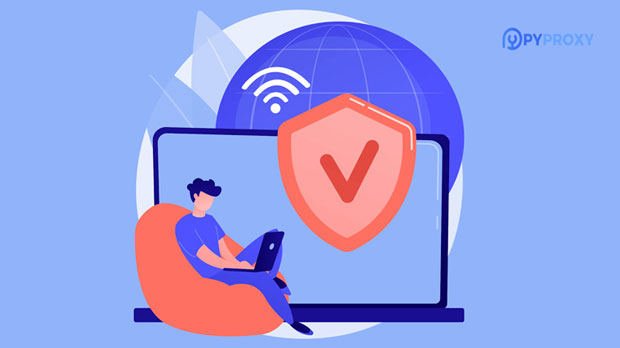Proxy server services have gained significant popularity worldwide, primarily driven by the need for enhanced security, privacy, and access to restricted content. While proxy servers are used globally, certain countries stand out due to the high frequency of their users. These countries often include those with concerns about internet censorship, privacy laws, or the need for secure data handling. Countries like the United States, Russia, China, India, and several in Europe, including Germany and the UK, are among the most frequent users of proxy server services. In this article, we will analyze the factors driving proxy server usage in these regions and provide a deeper understanding of the trends and motivations behind their popularity. Understanding the Global Demand for Proxy ServersThe rise of proxy server usage can be attributed to several key factors, including the increasing reliance on online activities, the need for privacy protection, and the ability to bypass geo-restrictions. As internet users become more aware of the risks associated with online activities, such as data breaches, surveillance, and identity theft, the demand for proxy servers has grown significantly. These servers act as intermediaries between users and the internet, providing a shield that helps mask their real IP addresses and ensures safer browsing.The global demand for proxy servers is also influenced by the growing need for access to restricted content. In countries with stringent censorship laws or content limitations, proxy servers offer a way for users to access blocked websites, social media platforms, or streaming services. Furthermore, businesses and individuals in various regions use proxies to conduct secure online transactions, access region-specific data, and enhance their browsing experience.The United States: The Epicenter of Proxy UsageThe United States stands out as one of the largest users of proxy servers. This is largely due to the country's robust online infrastructure, high internet penetration, and the increasing focus on cybersecurity. With millions of internet users across different sectors, the U.S. has seen a surge in demand for proxy servers, especially from businesses that need secure data handling, marketers who require location-based data, and individuals seeking to bypass geo-restrictions.One significant driver of proxy usage in the United States is the country's concern over data privacy. Following high-profile incidents of data breaches and surveillance practices, individuals and organizations are actively seeking solutions to protect their online presence. Proxies are widely used by both corporate entities and private citizens to safeguard their personal information and maintain anonymity.Moreover, the U.S. is home to many large-scale e-commerce and entertainment platforms, making proxies an essential tool for businesses looking to analyze competitor activities, conduct market research, or access global content without restrictions.Russia: A Rising Hub for Proxy UsageRussia has emerged as a significant user of proxy servers, mainly due to the government's increasing control over online content. With frequent censorship of websites and social media platforms, many Russians turn to proxy servers to access banned content or communicate freely without surveillance. The need for privacy and internet freedom is a driving factor behind this trend.Additionally, proxy usage is common among Russian businesses involved in digital marketing, web scraping, and data analysis. By using proxies, businesses can gather information without the risk of being blocked or penalized for excessive data requests. This trend is particularly prevalent in industries such as travel, real estate, and e-commerce, where accurate data from global sources is critical for business success.China: A Leader in Proxy Usage for Bypassing RestrictionsChina is known for its strict internet censorship policies, often referred to as the "Great Firewall of China." This has led to a significant demand for proxy servers as individuals and businesses look for ways to bypass content restrictions and access global websites and services. Social media platforms such as Facebook, Twitter, and Google are blocked in China, making proxy servers a popular tool for accessing these platforms and for communicating with the outside world.For Chinese businesses, proxy servers are crucial in gaining insights into global markets, performing research, and accessing region-specific data that might otherwise be restricted. Moreover, many Chinese individuals use proxies to access international streaming services, conduct secure online transactions, and protect their personal information from surveillance.India: Growing Use of Proxies for Privacy and Content AccessIndia has witnessed a rapid increase in the use of proxy servers, driven by the country's growing internet user base and the need for privacy and security. With a population of over 1.4 billion and millions of internet users, India has become a hotspot for online activity. The rise of e-commerce, digital marketing, and social media platforms has made proxy servers an essential tool for both businesses and individuals.In India, proxies are commonly used to access restricted content, including streaming services and websites that may be blocked or censored by the government. As digital security concerns rise, proxies are also used to protect users' personal data from cyber threats and to enable secure online transactions. Additionally, proxies allow businesses to perform web scraping and competitive analysis without facing restrictions or legal barriers.Germany and the UK: Privacy and Data Protection DriversGermany and the United Kingdom are two European countries where proxy server usage is notably high, primarily driven by concerns around data privacy and security. The General Data Protection Regulation (GDPR) in Europe has heightened the importance of safeguarding personal information, prompting many individuals and businesses to turn to proxies for added protection.In Germany, where internet privacy laws are strict, proxy servers are commonly used by both businesses and private users to ensure that their data remains secure. Proxies help users remain anonymous online, reducing the risk of data breaches and ensuring compliance with privacy regulations.Similarly, in the UK, there is an increasing demand for proxies among businesses that require secure data access for market research, competitive analysis, and customer insights. Individuals also rely on proxies to protect their online identity and to bypass geographical restrictions on content.The Role of Proxy Servers in Businesses and MarketingAcross all these countries, businesses are leveraging proxy servers for various commercial purposes. Marketing agencies use proxies to gather location-based data, conduct web scraping, and analyze customer behavior without revealing their identity or risking IP bans. In industries like e-commerce, finance, and travel, proxies play a crucial role in market research and competitor analysis.For digital marketing professionals, proxies are essential in running successful campaigns, testing different ad creatives in various regions, and obtaining valuable data from competitor websites. In addition, proxies are used for social media management, allowing businesses to engage with different global audiences while maintaining anonymity.Conclusion: The Growing Need for Proxy ServersIn conclusion, proxy server usage is on the rise in several countries, with varying motivations ranging from privacy protection and data security to bypassing content restrictions and conducting market research. The U.S., Russia, China, India, Germany, and the UK are among the most frequent users of proxy servers, each driven by unique factors such as internet censorship, privacy concerns, and the need for secure online transactions.As online activities continue to evolve, the demand for proxy servers is expected to grow, driven by the need for enhanced security, access to restricted content, and protection against cyber threats. For both individuals and businesses, proxy servers offer a practical solution to navigate the increasingly complex and regulated internet landscape.
Jul 30, 2025



































































